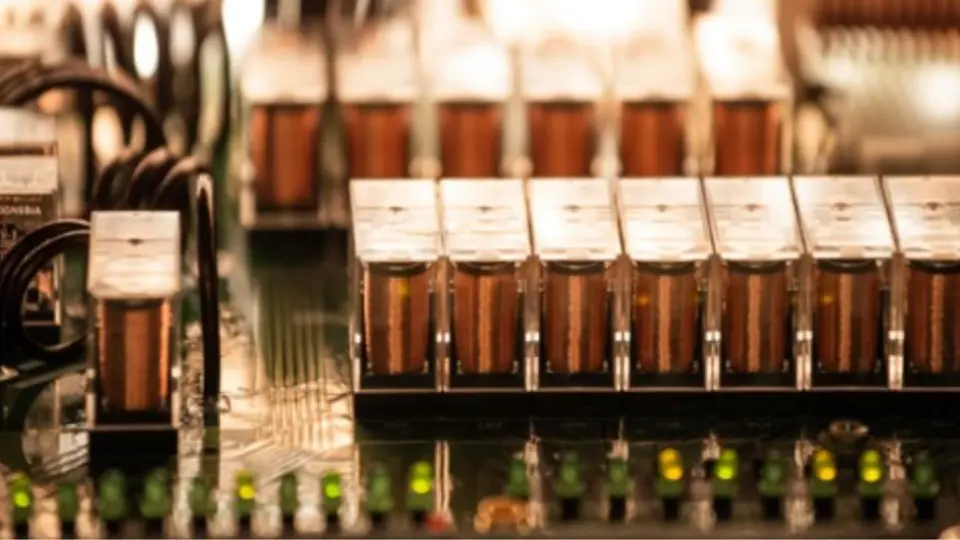Charging your phone, running the AC, powering your home office, and maybe even plugging in that new EV charger—today’s homes are using more electricity than ever. But is your circuit breaker panel actually built to handle it all?
Many homes still rely on outdated panels that weren’t designed for modern energy use. These older systems can quietly struggle behind the scenes, tripping more often or even posing fire risks. The truth is, if your panel is more than 20–30 years old, it might not be keeping up.
Upgrading your circuit breaker isn’t just about avoiding inconvenience. It’s about safety, performance, and future-proofing your home for the tech and energy demands that are only growing. Whether you’re adding appliances or just want peace of mind, a quick look at your panel could save you a major headache down the road.
How can you tell if your circuit breaker panel is outdated?
There are several signs that can indicate your circuit breaker panel is outdated and may need an upgrade. Here’s how to tell:
- Frequent Tripping: If your breakers trip frequently, especially when using multiple appliances simultaneously, it may be a sign that the panel is no longer capable of handling the electrical load required by modern devices.
- Old Breaker Model: Circuit breakers older than 20-30 years, particularly those from outdated brands such as Federal Pacific or Zinsco, are often considered less reliable and potentially unsafe. If your panel has one of these models, it’s time to consider a replacement.
- Visible Damage: Physical damage, such as rust, scorch marks, or cracks in the panel, suggests that your circuit breaker is no longer functioning properly. This can lead to fire risks and electrical hazards.
- Not Enough Breakers: With the rise in home appliances and electronics, you may need more circuits. If your panel is full and doesn’t have space for additional breakers, upgrading to a larger panel is necessary to accommodate modern demands.
- Outdated Wiring: Older wiring systems, such as aluminum wiring or outdated grounding, can increase the risk of electrical problems. If your home is wired with outdated materials, your circuit breaker panel likely needs an upgrade as well.
- Inconsistent Power: If you experience dimming lights or power surges, it could be a sign that your electrical panel is struggling to keep up with demand, indicating that it’s time for an upgrade.
Upgrading your circuit breaker panel ensures that your home remains safe, efficient, and ready for future electrical demands.
What electrical upgrades are needed for modern home appliances?
Modern home appliances are more energy-efficient but also require more power and specialized electrical setups. To ensure your home can handle these new demands, certain electrical upgrades may be necessary. Here are key upgrades that might be required:
- Upgraded Circuit Breaker Panel: As appliances become increasingly power-hungry, your existing circuit breaker panel may struggle to handle the load. Upgrading to a higher-capacity panel ensures that your home can support multiple appliances running simultaneously without the risk of overload or tripping the circuit breaker.
- Dedicated Circuits for High-Powered Appliances: Appliances such as electric stoves, washers, dryers, and electric vehicle (EV) chargers require dedicated circuits to prevent overloading. These circuits ensure that each appliance has enough power to operate safely without affecting other household devices.
- EV Charger Installation: As more households adopt electric vehicles, installing a dedicated EV home charger is becoming increasingly essential. These chargers require a specific power level and may need a separate 240-volt circuit.
- Upgraded Wiring: Older homes often have outdated wiring that cannot meet the electrical demands of modern appliances. Upgrading to copper wiring or adding additional circuits for high-demand devices can prevent electrical hazards.
- Smart Home System Integration: As more people incorporate smart home technology, ensuring that your electrical system can support devices like smart thermostats, lighting systems, and security equipment is crucial.
- Surge Protection: With the increasing number of electronic devices, installing a whole-home surge protector can prevent damage from power spikes caused by storms or electrical malfunctions, keeping your appliances safe.
These upgrades ensure that your home is prepared for the demands of modern appliances, improving safety, efficiency, and the overall lifespan of your devices.
How does a circuit breaker panel handle increased electrical demand?
A circuit breaker panel handles increased electrical demand by distributing power safely to different parts of the home and preventing overloads. Here’s how it works:
- Distributes Power: The panel is connected to the main power source, distributing electricity to various circuits throughout the house. Each circuit powers different appliances, lights, or outlets in specific areas of your home.
- Overload Protection: Circuit breakers are designed to automatically trip when the electrical demand exceeds the circuit’s capacity, cutting off power to prevent overheating or potential fire hazards.
- Increased Capacity: If your home’s electrical demand increases due to the addition of new appliances or devices, you may need to upgrade to a higher-capacity circuit breaker panel. A modern panel can handle more circuits and provide sufficient power for high-demand items, such as electric vehicles, air conditioners, or home office equipment.
- Dedicated Circuits: Newer panels may include additional dedicated circuits for high-powered appliances, ensuring that these devices don’t overload other parts of the electrical system.
By upgrading or properly maintaining your panel, you can ensure it meets modern electrical demands safely and securely.
What are the signs that your circuit breaker needs replacement?
Several signs indicate your circuit breaker may need replacement. If you notice any of the following, it’s time to have your panel assessed by an electrician:
- Frequent Tripping: If your circuit breaker trips often, it may indicate that the breaker is worn out or cannot handle the electrical load properly. This could be due to outdated wiring or an overloaded circuit.
- Old or Outdated Model: Circuit breakers older than 20-30 years, especially those from older brands such as Federal Pacific or Zinsco, may be unreliable and pose a safety hazard. These older models may no longer meet current safety standards.
- Visible Damage: If there are scorch marks, rust, or signs of burning around the circuit breaker panel, it’s a clear indication of internal damage. This could mean the breaker is not functioning properly and may pose a fire risk.
- Physical Wear: Breakers that feel hot to the touch or have trouble staying in the “on” position could be malfunctioning. This is a sign that the internal components are failing.
- Inconsistent Power: Flickering lights, power surges, or electrical appliances not operating at full capacity could be a sign of an overloaded or failing breaker.
- Inability to Handle New Electrical Loads: If you’ve added new high-power appliances (such as an EV charger, HVAC system, or large kitchen appliances) and the circuit breaker can’t keep up, it may need to be replaced with one that has a higher capacity.
Upgrading your circuit breaker panel can improve the safety and efficiency of your electrical system.
Upgrade Your Panel—Power Your Home Safely and Efficiently
As electrical demands continue to grow with the increasing use of modern appliances and technology, it’s essential to have a circuit breaker panel that can keep pace. An outdated or overloaded panel can lead to electrical issues, safety hazards, and inefficient energy use. Our team of experts is here to assess your home’s electrical system and recommend the best solutions to meet your needs.
Whether you’re adding an EV charger, new appliances, or smart home devices, an upgraded panel ensures safety, reliability, and efficiency. Contact us today!

